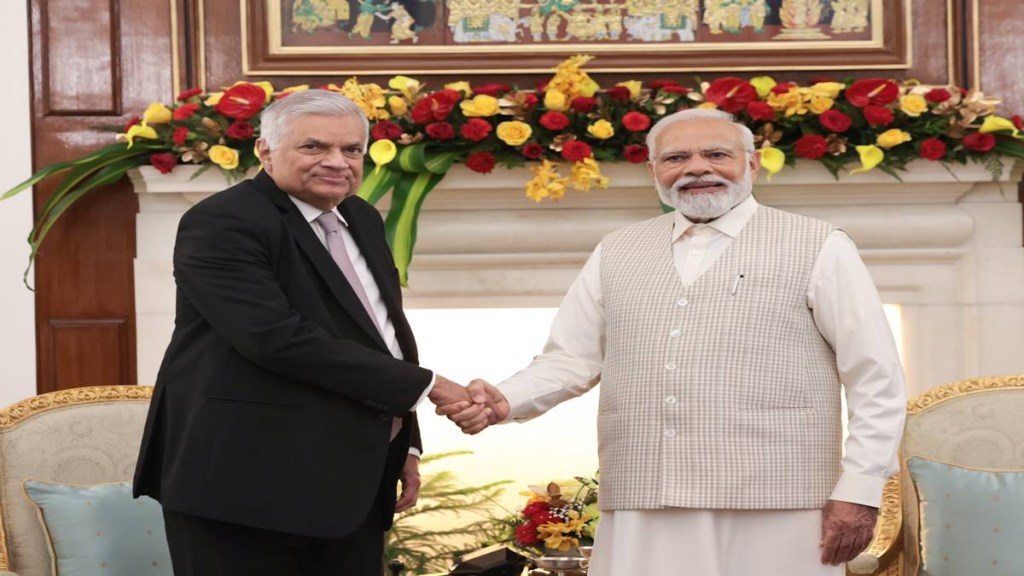With a vision to develop Trincomalee as a regional hub, India and Sri Lanka are determined to deepen their ties through trade, digitalization, and people-to-people engagement. Prime Minister Narendra Modi and President Ranil Wickremesinghe during talks addressed the economic crisis faced by Sri Lanka, leading to various agreements and declarations of intent that signal growing economic collaboration between the two neighboring nations.
A Common Vision for Enhanced Connectivity
During a special briefing in New Delhi, Foreign Secretary Vinay Kwatra highlighted the importance of high-grid connectivity between India and Sri Lanka. He said that the two countries have agreed to develop Trincomalee as a regional hub and explore the resumption of passenger ferry services between Nagapattinam in Tamil Nadu and Kankesanturai in Sri Lanka, aiming to boost trade and people-to-people travel.
Air connectivity between Southern India and Sri Lanka is also under consideration, promising to further bolster economic and people-to-people links.
Additionally, the leaders expressed their intention to work towards the early resumption of ferry services between Rameshwaram and Talaimannar, along with other mutually agreed places. This renewed focus on connectivity demonstrates India’s long-term commitment to fostering regional cooperation and prosperity.
Outlining the Scope of Bilateral Relations
The leaders of India and Sri Lanka reviewed the entire spectrum of their bilateral relationship and established a common vision for further development. Discussions encompassed various dimensions of connectivity, such as trade, digitalization, and people-to-people engagement, signaling a commitment to fostering stronger ties.
Addressing the Economic Crisis
Given the recent economic challenges faced by Sri Lanka, Tourism has been identified as a consistent contributor to the nation’s economy, with India being the largest contributor. Digitalization emerged as a crucial element in the discussions, emphasizing the need to adapt to the evolving economic landscape.
Vision Document for Economic Partnership
To fortify economic cooperation, the leaders adopted a vision document that focuses on enhancing maritime, air, energy, and people-to-people connectivity. This document serves as a framework for accelerating mutual cooperation in tourism, higher education, business, and skill development, strengthening ties and fostering prosperity.
Agreements and Declarations
During the visit, the two sides exchanged a joint declaration of intent on Animal Husbandry and entered into Memorandums of Understanding (MoUs) on Economic Development Projects in Trincomalee district, Renewables, and UP usage. These agreements are aimed at promoting sustainable development and economic growth in the region.
India’s Support during Sri Lanka’s Economic Crisis
In the face of Sri Lanka‘s worst economic crisis in modern history, India stood as a close friend, offering critical financial and humanitarian assistance worth over US$4 billion. This support aimed at stabilizing the country amid an acute foreign currency crunch and outstanding total debt. India’s role also facilitated Sri Lanka’s debt restructuring efforts, leading to a US$3 billion bailout package approved by the IMF.
The Quest for Regional Influence
Due to its strategic location in the Indian Ocean, the island nation has attracted the attention of regional rivals India and China. In recent years, China’s significant loans and infrastructure investments have led to increased influence in the region. However, India’s strengthened ties with Sri Lanka signal a renewed quest for regional influence and cooperation.
Focus on Energy and Infrastructure Trade Opportunities
Modi and Wickremesinghe discussed potential trade opportunities in energy and infrastructure, including the possibility of a petroleum pipeline from Southern India to Sri Lanka. The development of Trincomalee, a northeastern coastal city, into an industrial hub also promises to boost economic collaboration between the two nations.
Support for Sri Lanka’s Ethnic Minority Tamil Population
Both leaders supported the full implementation of an India-backed plan to share power with ethnic minority Tamil population in the north and east provinces of the island nation.
Consolidating Regional Logistics and Shipping:
To further establish land connectivity between Sri Lanka and India, both countries have decided to cooperate in the development of ports and logistics infrastructure at Colombo, Trincomalee, and Kankesanthurai. This move aims to facilitate easier land access to these ports, consolidating regional logistics and shipping operations. Such collaboration will bolster trade and economic growth in the region.
Recognizing Sri Lanka’s Resilience and Congratulating President Wickremesinghe
Prime Minister Modi acknowledged the resilience displayed by the people of Sri Lanka during the recent economic crisis. He congratulated President Ranil Wickremesinghe on completing one year in office, highlighting the intertwined security interests of both countries. India stands as a close friend to Sri Lanka, offering support during challenging times.
India’s Neighbourhood First Policy and Vision SAGAR:
The island nation is an important partner in India’s Neighbourhood First Policy and Vision SAGAR. The recent visit of Sri Lankan President Ranil Wickremesinghe to India further solidifies the longstanding friendship between the two nations, emphasizing their shared commitment to regional stability and prosperity.
The recent discussions and agreements between India and Sri Lanka underscore their dedication to enhancing connectivity, cooperation, and economic partnership. By resuming passenger ferry services, fostering economic collaboration, and consolidating regional logistics, both countries are poised to strengthen their ties and reinforce their commitment to regional development. As Sri Lanka continues to play a significant role in India’s strategic policies, the bond between the two nations is set to grow even stronger in the future.
